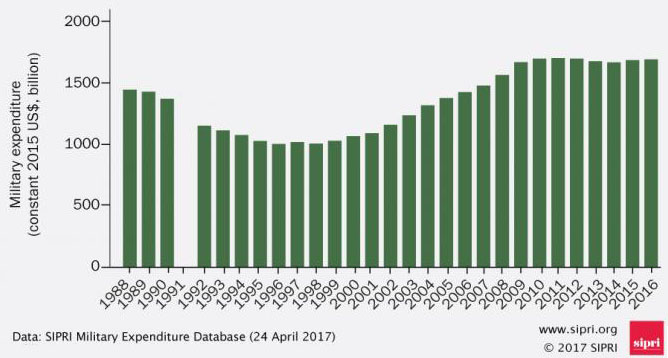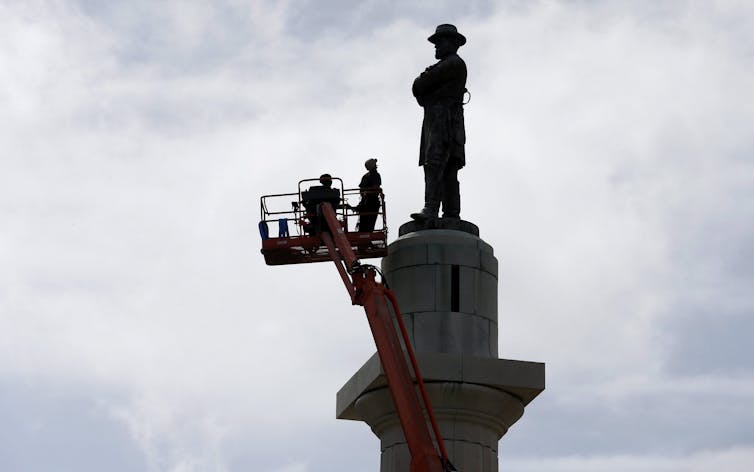Key Facts
World military expenditure was $1686 billion in 2016, an increase of 0.4 per cent in real terms.
Total military spending accounted for 2.2 per cent of the global GDP in 2016.
The five biggest spenders in 2016 were the USA, China, Russia, Saudi Arabia and India.
Military expenditure increased in Asia and Oceania, Europe (Central, Eastern and Western) and North America.
Military spending decreased in Africa, Central America and the Caribbean, and South America.
Of the countries in the Middle East for which data is available, total military expenditure fell by 17 per cent; the major decreases were in Iraq (–36 per cent) and Saudi Arabia (–30 per cent).
Military expenditure in the USA grew by 1.7 per cent to $611 billion in 2016, the first increase after five consecutive years of decline. Despite this slight increase, US military spending remains 20 per cent lower than the peak of 2010.
The fall and continued slump in world oil prices has had a substantial effect on military spending in a majority of oil-export dependent countries. In many cases (e.g. Saudi Arabia, South Sudan and Venezuela), country-specific cuts have been so substantial that they have affected regional and subregional spending trends.
World military expenditure is estimated to have been $1686 billion in 2016, equivalent to 2.2 per cent of the global gross domestic product (GDP) or $227 per person.1 The 2016 estimate is a marginal increase of about 0.4 per cent in real terms on 2015.2 After 13 consecutive years of increases (from 1998 to 2011), world military spending has continued to plateau—with only minor decreases between 2011 and 2014 (an average of 0.7 per cent per annum) and slight increases in 2015 and 2016 (see figure 1).3
In many oil-exporting countries, increases in military spending over the past 10 years have been correlated with high oil prices. The subsequent fall in the price of oil has led to substantial decreases in military spending. Since late 2014, the sharp fall in oil prices and the persistent price slump have had a significant impact on spending in several oil-exporting countries. The decline in oil revenue has forced many oil-exporting countries to cut their government budgets, including military spending. The falls in countries such as Angola, Ecuador, Iraq, Mexico, Saudi Arabia, South Sudan and Venezuela have affected the wider regional trends.
Figure 1. World military expenditure, 1988–2016
Note: The totals are based on the data on 172 states in the SIPRI Military Expenditure Database, . The absence of data for the Soviet Union in 1991 means that no total can be calculated for that year.

















